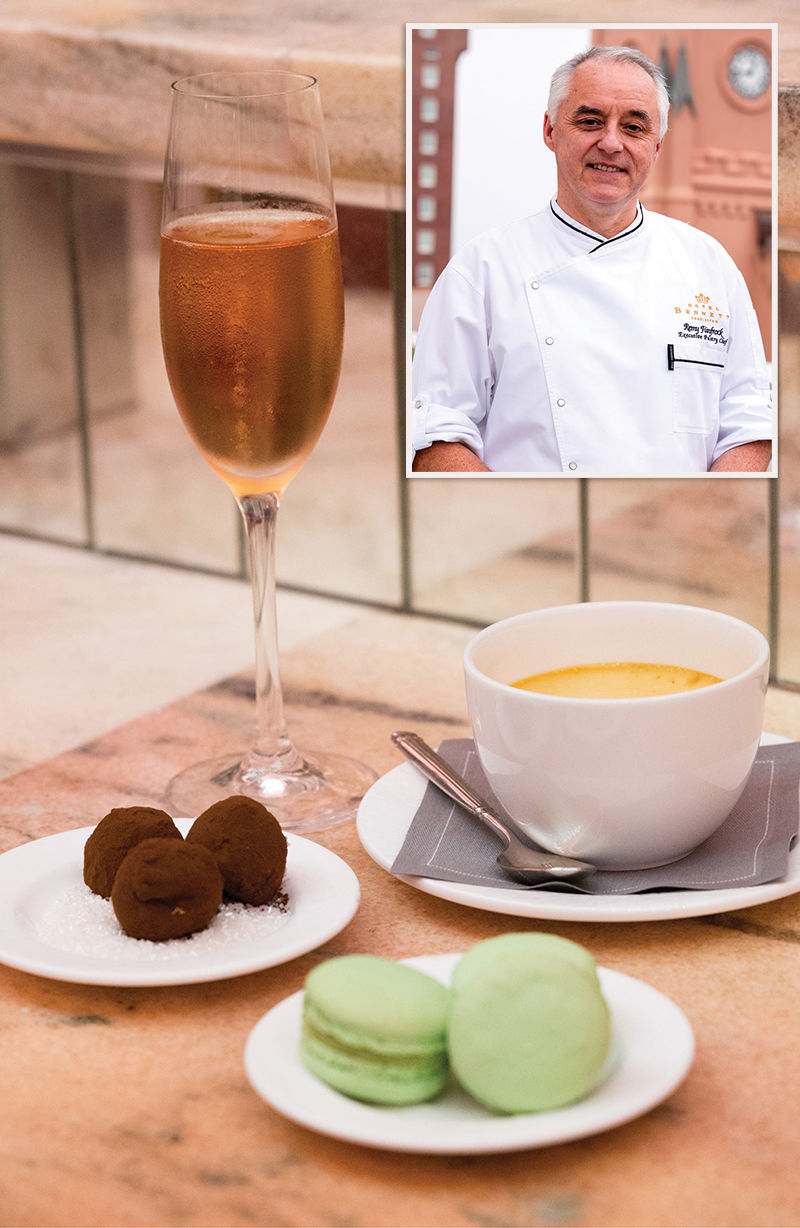Bake like a pro-pâtissier with these easy but impressive recipes

At champagne bar Camellias, a glass of sparkling rosé makes for a perfect pairing with chef Rémy Fünfrock’s (inset above) on-menu confections, which can be enjoyed throughout Hotel Bennett.
Meet the Chef: Rémy Fünfrock
Award-winning pastry chef Rémy Fünfrock arrived in the Lowcountry in 2014, but his illustrious career began in Lyon, France, where he was born and raised. After attending culinary school at Lycée Jean Rablais, Fünfrock continued his studies apprenticing with famed pâtissiers Jacques Frery and Pierre Hermé, as well as master chocolatier Pascal Brunstein. After honing his ice cream skills at Bechard, a celebrated Provençal confectioner, Fünfrock went on to work at a number of renowned world-class restaurants and hotels across Europe and the States (such as Daniel Boulud’s DANIEL in New York City, The Broadmoor Hotel in Colorado Springs, and Roger Vergé’s Moulin de Mougins in Côte d’Azur). A warmer year-round climate eventually lured the Frenchman to America’s southern coastline, and after a tenure at The Sanctuary at Kiawah Island, Fünfrock relocated to Charleston. He joined Hotel Bennett as executive pastry chef in 2019, where his confections are served in champagne bar Camellias, restaurant Gabrielle, and French bakery La Pâtisserie.
Recipes:
Chef’s Tips:
■ Low & Slow: Baking via “hot water bath” may sound intimidating, but don’t be afraid. One extra step will open the door to an array of showstopping desserts you can add to your repertoire. Pot de crème as well as crème brulée require a low temperature baking process. “This method lets the custard yolks coagulate slowly and evenly and allows the ramekins to avoid contact with dry, direct heat,” says Fünfrock.
■ Sweet Stuff: Corn syrup differs from the high fructose stuff we’ve long been told to cut from our diets. Also known as “glucose syrup,” this ingredient is a humectant, thickener, and sweetener; in baking, the choice comes down to science. “When making something like ganache (chocolate cream), corn syrup reduces sugar crystallization,” Fünfrock says. “Granulated sugar has the tendency to dry up chocolate during the confection-making process.” Brands such as Karo are most common in the States.
■ Numbers Game: When choosing the ideal cacao percentage, Fünfrock says the ratios are up to you. He combines a 58% cacao dark chocolate with milk chocolate for a little added sweetness. “It all depends on what you want to achieve and your taste preferences.”
■ Churn Up: What kind of butter does a French pastry chef prefer? “Beurre d’Isigny from Northwest France, in the Normandy region, is the best quality butter,” attests Fünfrock. “It’s made out of fresh grass-fed cow’s milk, taken between 24 to 48 hours of natural production, then refined through an old-fashioned process. The high quality milk, in addition to the specific process of turning the cream into butter, gives this product an exceptional flavor, which carries on to the pastries.”